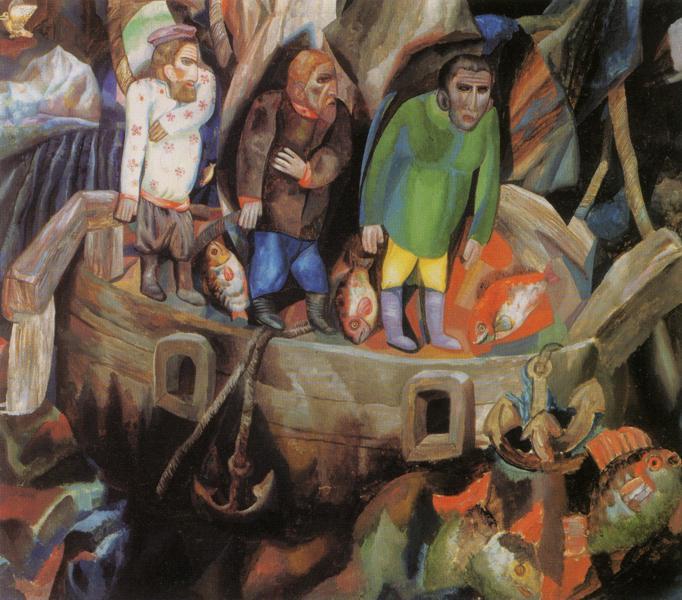Description
The work of Pavel Filonov, "West and East - 1913", is erected as a transcendental example within the panorama of Russian art of the early twentieth century, not only because of its visual complexity, but also because of the symbolic wealth that emanates from its composition . Filonov, a painter nestled in a time of transitions and deep historical seizures, manages to encapsulate in this painting a kind of dialogue between cultures and civilizations, expressed through an amalgam of shapes and colors.
When observing the painting "West and East - 1913", the viewer faces a dense mesh of geometric and organic shapes that coexist in an intricate and labyrinthine pattern. The composition is dominated by an apparent lack of empty space; Each centimeter of the canvas seems to be saturated with activity and meaning. This distinctive feature of Filonov can be considered a reflection of its "analytical realism" theory, in which each element of the painting is indispensable and charges equal importance in visual narrative.
The chromatic spectrum of the work is equally remarkable. Filonov predominantly uses a palette of terrible, sand, ocher and green colors that evoke the landscape and cultural diversity of the "west" worlds and "this" that melt into the work. The integration of these warm and cold tones is not merely decorative, but suggestive: it tells us about interconnection and continuous dialogue between diverse cultures and societies. The painting does not explicitly delineate recognizable characters; However, it is as if each fragment of the canvas was impregnated with the essence of hundreds of faces and humanized, modularized and abstract figures.
Filonov demonstrates a technical virtuosity in the almost fractal segmentation of forms, a trend that anticipates subsequent artistic practices such as Cubism. His focus on thorough details and meticulous construction of visual reality invite a stopped exploration, to observe how small visual cells are assembled to form a larger narrative.
Contextually, "West and East - 1913" it is located in a time of pre -war, in a time where socio -political tensions and dynamics between continents were deeply influential. The painting can be interpreted as a symbolic representation of the encounter and the collision of these worlds, a visual anticipation of the historical events to be followed.
The analysis of "West and East - 1913" underlines the unique ability to interwoven visual elements with a philosophical and cultural complexity without a paragon. His work not only reflects the enormous technical expertise of the artist, but also his deep meditation on the human being and his place in the historical and cultural coordinates of time.
KUADROS ©, a famous paint on your wall.
Hand-made oil painting reproductions, with the quality of professional artists and the distinctive seal of KUADROS ©.
Art reproduction service with satisfaction guarantee. If you are not completely satisfied with the replica of your painting, we refund your money 100%.

